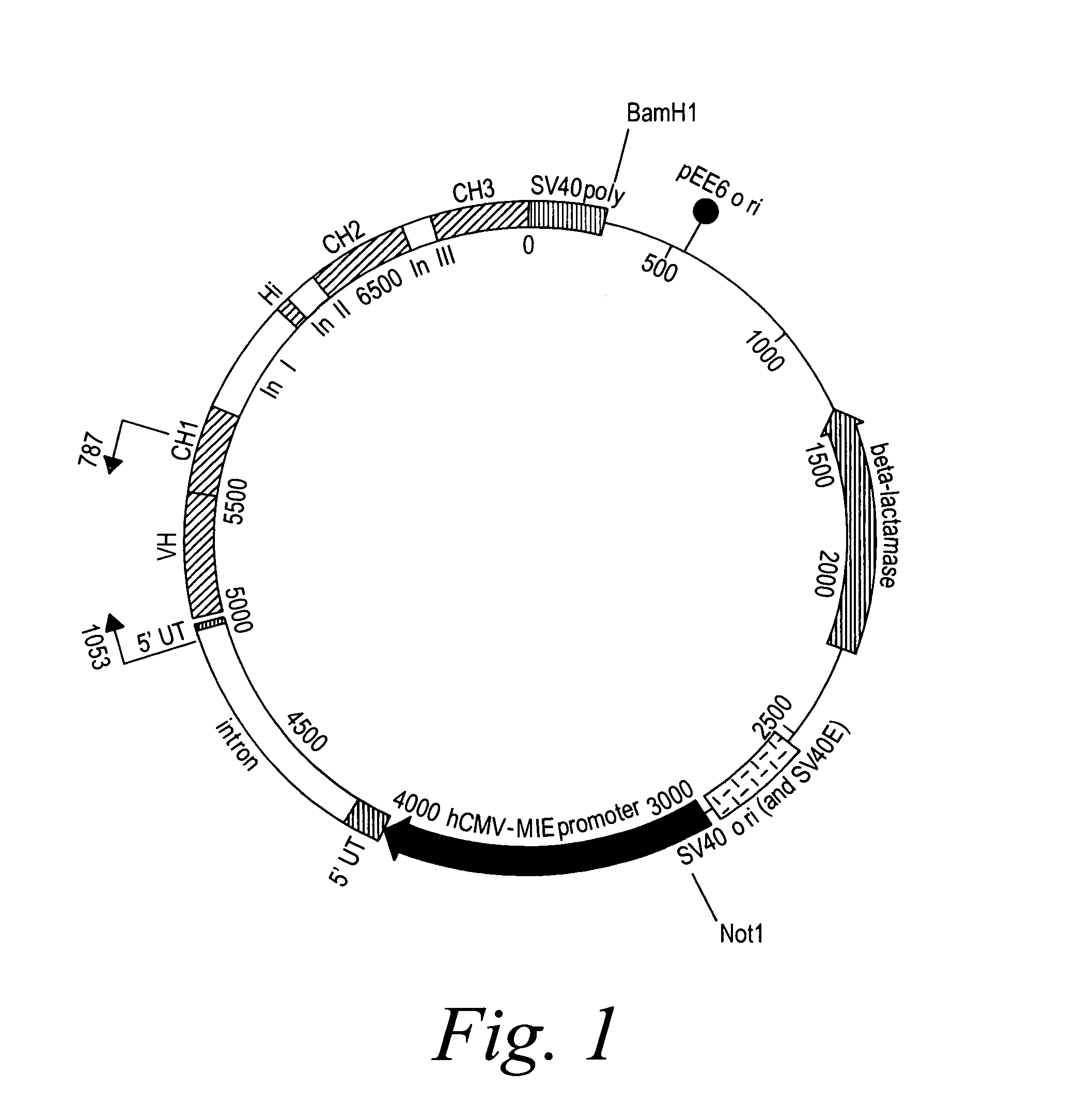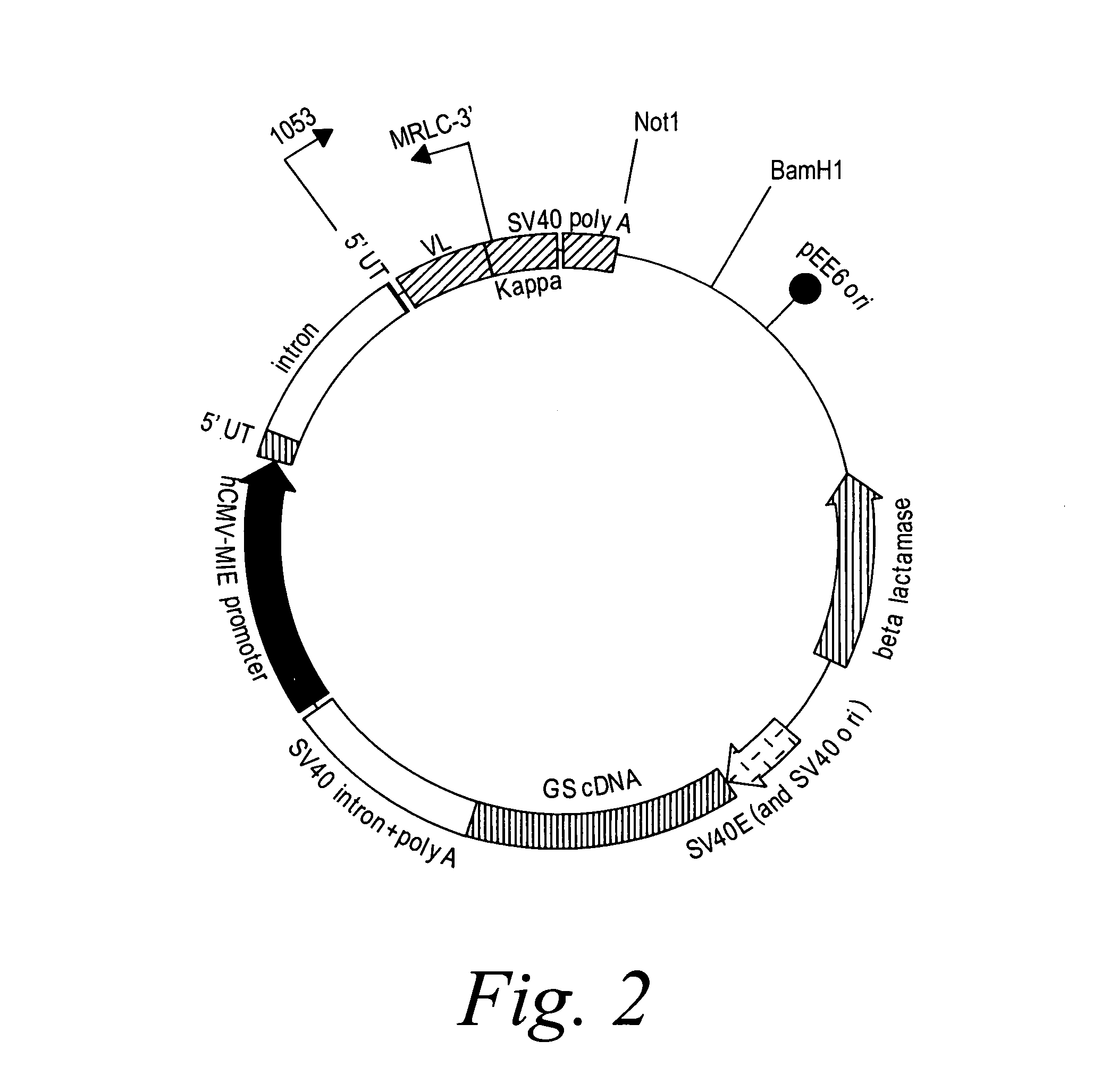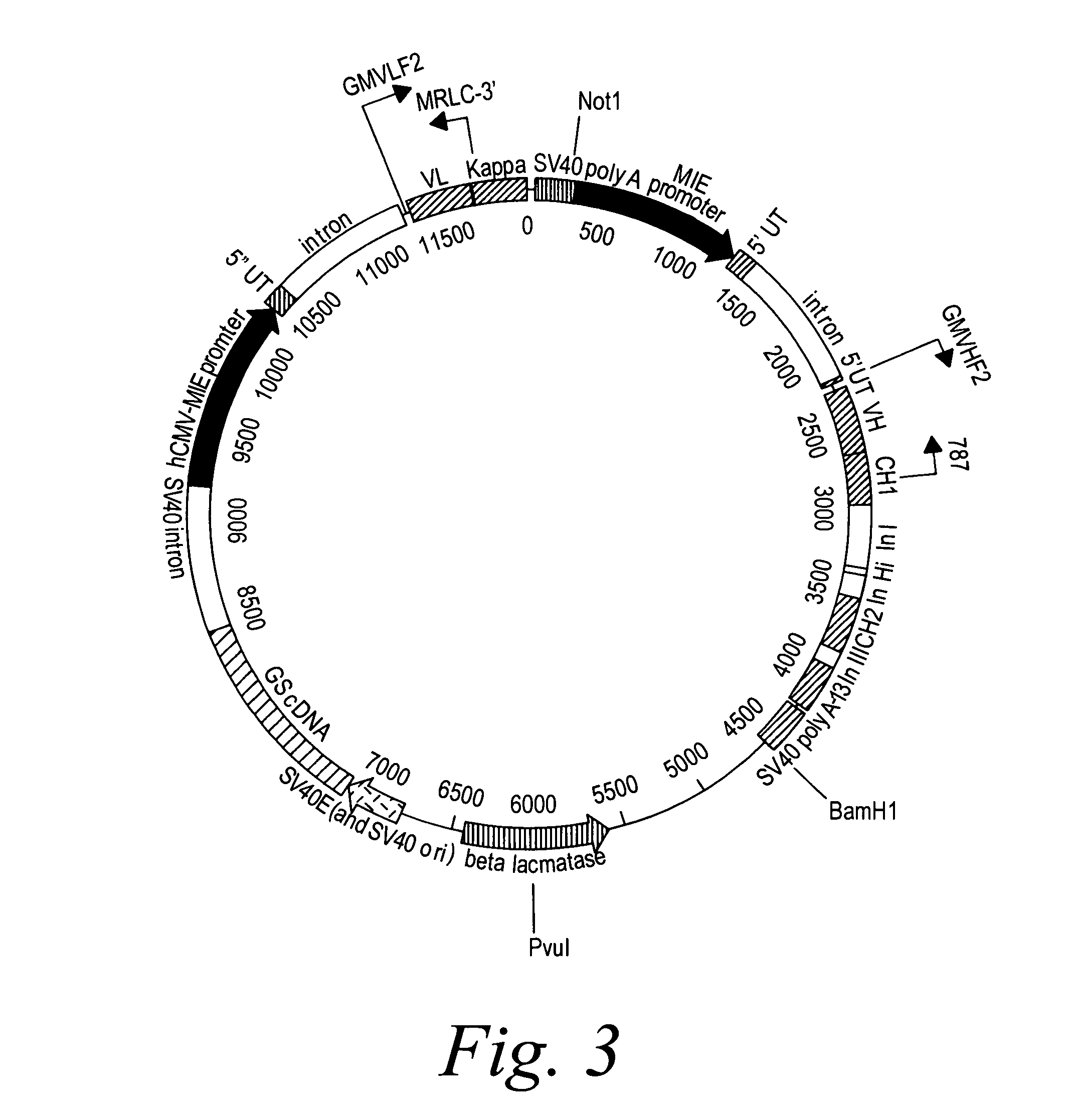Human monoclonal antibodies against CD20
a technology of monoclonal antibodies and cd20, which is applied in the field of human monoclonal antibodies against cd20, can solve the problems that current available murine and chimeric antibodies do not constitute ideal therapeutic agents, and achieve the effect of less immunogenicity
- Summary
- Abstract
- Description
- Claims
- Application Information
AI Technical Summary
Benefits of technology
Problems solved by technology
Method used
Image
Examples
example 1
Production of Human Antibodies Against CD20
[0366]HCo7 and KM Mice: Fully human monoclonal antibodies to CD20 were prepared using HCo7 and KM mice which express human antibody genes. In the KM mouse strain, the endogenous mouse kappa light chain gene has been homozygously disrupted as described in Chen et al. (1993) EMBO J. 12:811-820 and the endogenous mouse heavy chain gene has been homozygously disrupted as described in Example 1 of PCT Publication WO 01 / 09187. This mouse strain carries a human kappa light chain transgene, KCo5, as described in Fishwild et al. (1996) Nature Biotechnology 14:845-851. This mouse strain also carries a human heavy chain transchromosome composed of chromosome 14 fragment hCF (SC20) as described in WO 02 / 43478.
[0367]The HCo7 mice have a JKD disruption in their endogenous light chain (kappa) genes (as described in Chen et al. (1993) EMBO J. 12: 821-830), a CMD disruption in their endogenous heavy chain genes (as described in Example 1 of WO 01 / 14424), a ...
example 2
Antibody Sequencing of Human Antibodies Against CD20
Sequencing of the VL and VH Regions
[0379]RNA preparation: Total RNA was prepared from 5×106 cells of all HuMAb CD20 hybridoma cell lines (2F2, 7D8 and 11B8) with RNeasy kit (Qiagen, Westburg, Leusden, Netherlands) according to the manufacturer's protocol.
[0380]cDNA preparation of 2F2 and 7D8: 5′-RACE-Ready Complementary DNA (cDNA) of RNA was prepared from 1 μg total RNA, using the SMART RACE cDNA Amplification kit (Clonetech), following the manufacturer's protocol.
VH and VL regions were amplified using an advantage HF 2 PCR Kit (Clonetech, BD) and using the following primers:
[0381]
VK RACE25′ GCA GGC ACA CAA CAG AGG CAG TTC CAG ATT TCanneals in C-kappa(SEQ ID NO:31)VH RACE25′ GCT GTG CCC CCA GAG GTG CTC TTG GAG Ganneals in CH1(SEQ ID NO:32)
[0382]cDNA preparation of 11B8: Complementary DNA (cDNA) of RNA from 11B8 cells was prepared from 3 μg total RNA with AMV Reverse Transcriptase with buffer (Roche Diagnostics GmbH, Mannheim, Germa...
example 3
Recombinant Production of 2F2 and 11B8 in GS-NS / 0 Cell Line
[0393]2F2T: The heavy chain and light chain variable regions of the 2F2 antibody were amplified, using PCR, from a standard cloning vector, pGem-5Zf (Promega), using primers which included an optimal Kozak sequence and suitable restriction sites to clone the fragments in the GS constant region vectors pCONγ1f and PCONκ (Lonza).
[0394]After amplification, the fragments were purified and digested with the restriction enzymes for cloning and ligated in the two vectors. The heavy chain variable fragment was digested with Hind III and Bsi WI and ligated into the pCONγ1f vector which had been digested with Hind III and Bsi WI, and dephosphorylated with alkaline phosphatase. The light chain variable fragment was digested with Hind III and Apa I and ligated into the PCONκ vector which had been digested with Hind III and Apa I, and dephosphorylated with alkaline phosphatase. The pCONγ1f / variable-heavy and PCONκ / variable-light vectors ...
PUM
| Property | Measurement | Unit |
|---|---|---|
| dissociation equilibrium constant | aaaaa | aaaaa |
| concentration | aaaaa | aaaaa |
| temperature | aaaaa | aaaaa |
Abstract
Description
Claims
Application Information
 Login to View More
Login to View More - R&D
- Intellectual Property
- Life Sciences
- Materials
- Tech Scout
- Unparalleled Data Quality
- Higher Quality Content
- 60% Fewer Hallucinations
Browse by: Latest US Patents, China's latest patents, Technical Efficacy Thesaurus, Application Domain, Technology Topic, Popular Technical Reports.
© 2025 PatSnap. All rights reserved.Legal|Privacy policy|Modern Slavery Act Transparency Statement|Sitemap|About US| Contact US: help@patsnap.com



